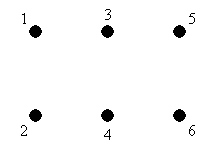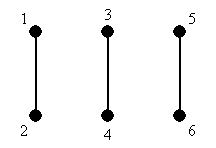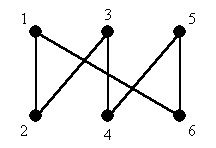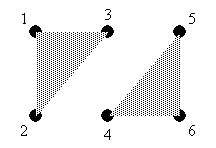
You can expect Test 1 (on Friday, October 3) to contain problems similar to some of these.




glColor3d(0.1, 0.9, 0.1); // green
glBegin(GL_TRIANGLES);
glVertex2d(1., 1.);
glVertex2d(2., 3.);
glVertex2d(0., 5.);
glEnd();
Instead of GL_TRIANGLES, we could have used any of the primitives
GL_TRIANGLE_STRIP, GL_TRIANGLE_FAN, or GL_POLYGON.
Also, any slight variation on the color (0.1, 0.9, 0.1) would be fine.